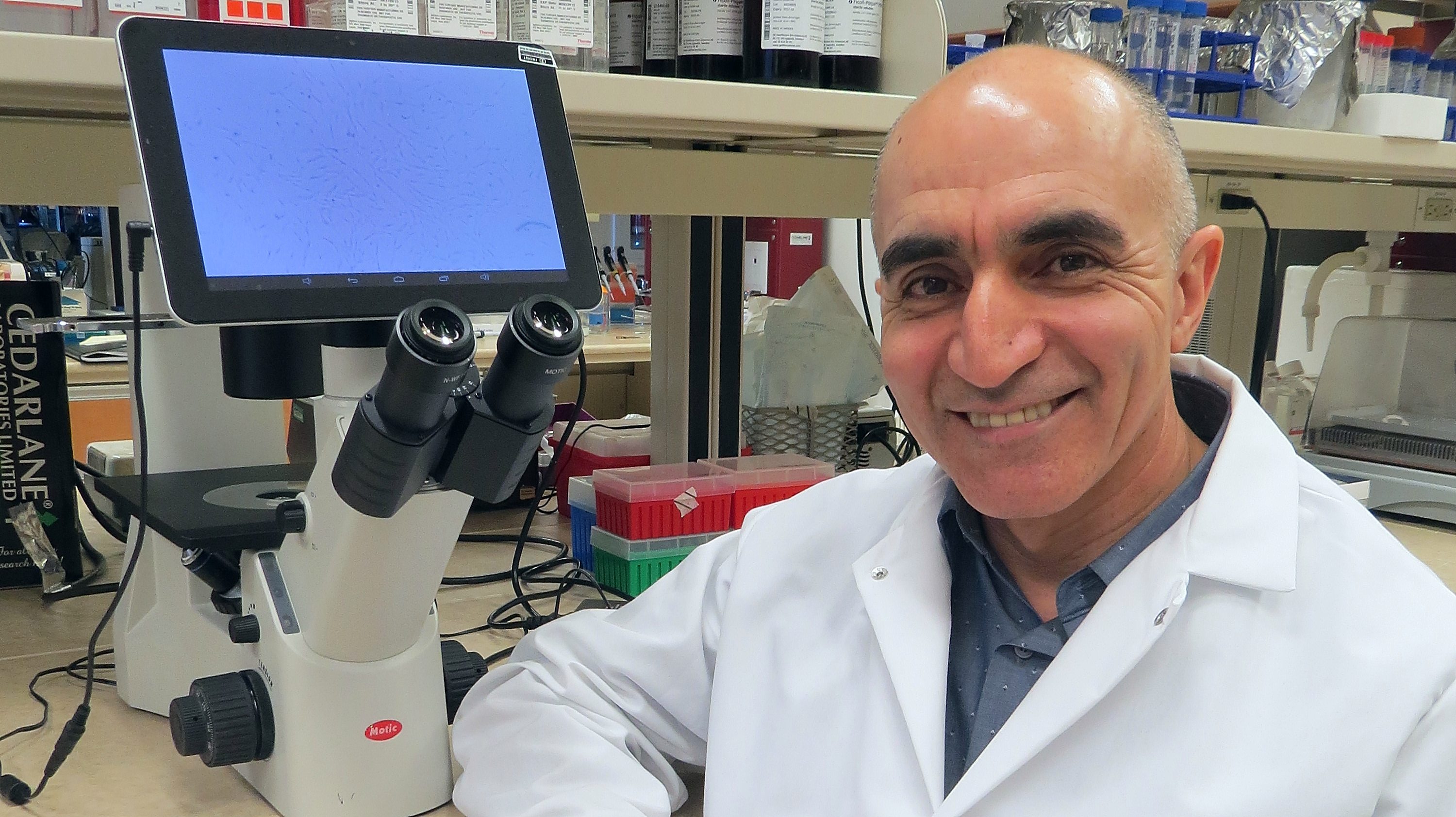University of Alberta researchers have uncovered a link between the expression of the protein galectin-9 (gal-9) and whether a cancer patient will benefit from immunotherapy. The discovery could help inform physicians about which patients will likely respond to immunotherapy, and lead to better treatment options.
Shokrollah Elahi, a member of the Cancer Research Institute of Northern Alberta (CRINA), collaborated with oncology professor John Walker on a Phase 2 clinical trial that examined 40 patients with virus-associated solid tumours (VASTs) who were put on immunotherapy. They found there was a direct link between patients with high levels of gal-9 and those who had a poor prognosis and did not respond to immunotherapy. Further, patients with lower levels of gal-9 responded better to treatment.
“This is something that can be easily examined. You don’t need to do extensive invasive procedures, such as a biopsy; you can just collect blood and then do a simple test where you look at the expression of this protein on killer T cells. Then, based on the expression level, you can somewhat predict what’s going to happen in terms of prognosis,” said Elahi.
In previous research, Elahi found that gal-9 was associated with impaired T cell function in patients with HIV. The cells are important in fighting against viruses and tumours, but gal-9 expression had never been looked at in T cells in cancer.
Gal-9 is present in the body in two forms. It is found either floating in the blood plasma or bound within the cell membrane. The latter is the type that Elahi and his team examined. Normally, the cell membrane-bound gal-9 is located within the cell, but in certain cases—such as in the context of cancer—it moves to the exterior and binds to the surface of the cell. According to Elahi, this surface binding affects the function of the cell and its interaction with other immune cells, including killer T cells.
“What happens is when the killer T cells express gal-9, the cells become dysfunctional, they become exhausted, and they are unable to do their job, which is to kill the tumour cells,” said Elahi, who is also a member of the Women and Children’s Health Research Institute and the Li Ka Shing Institute of Virology.
Next steps include testing whether blocking gal-9 in combination with immunotherapy can prevent tumour growth, and expanding to look at gal-9 expression in different types of cancer. Gal-9 also has the potential to be used as a biomarker to determine which patients will respond to immunotherapy.
The research was supported by the Canadian Institutes of Health Research, and the Alberta Cancer Foundation supported the Phase 2 cancer study.
The study, “Galectin-9 expression defines exhausted T cells and impaired cytotoxic NK cells in patients with virus-associated solid tumors,” was published in the Journal for ImmunoTherapy of Cancer.
